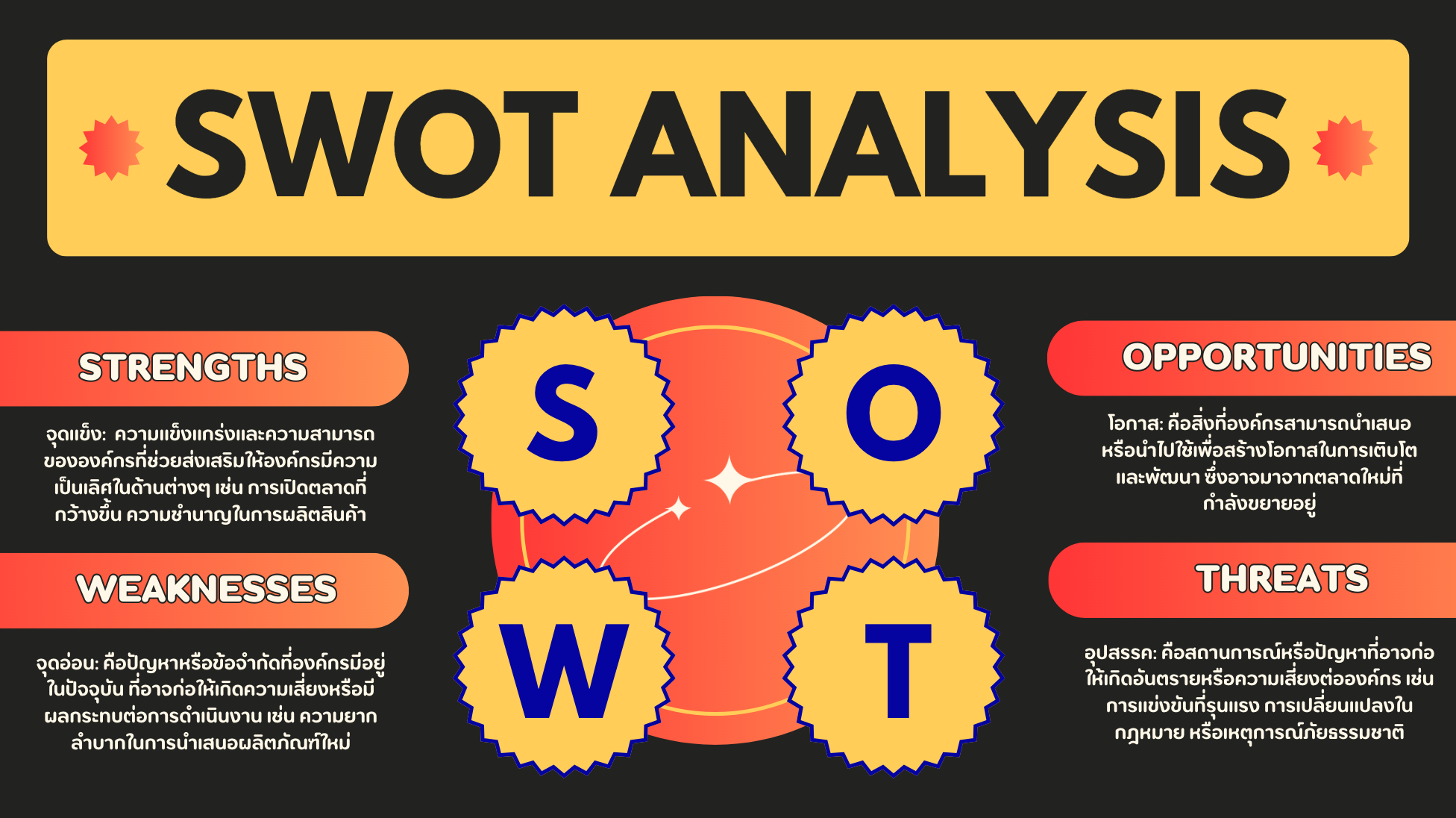SWOT is an analysis tool widely popular in strategic planning for organizations. It’s an abbreviation representing four factors: Strengths, Weaknesses, Opportunities, and Threats, which aid organizations in comprehensively identifying and understanding the internal and external environments affecting business operations.
SWOT analysis is a process helping organizations identify internal strengths and weaknesses, as well as opportunities and obstacles from the external environment. This information is then used to determine appropriate strategies and plans. SWOT Analysis is a widely used tool for determining business strategies. Although the concept and core structure of SWOT were developed a long time ago, the origins of this tool are still debated. Today, SIXTYGRAM will guide you through a simple SWOT analysis!
History of SWOT Principles
The origins of SWOT Analysis are rooted in studies conducted by American academics. In the late 1960s, it was reported that SWOT Analysis was invented and developed at the Stanford Research Institute (SRI International) during the 1960s and 1970s under the research of Albert Humphrey and his colleagues. They identified shortcomings in strategic planning approaches of that era, which predominantly focused on analyzing and predicting external factors while overlooking an organization’s internal strengths and weaknesses. Consequently, Humphrey developed the SWOT environmental analysis tool, which encompasses both internal and external factors of an organization, enabling organizations to formulate strategies consistent with their situation.
Subsequently, SWOT Analysis gained wider acceptance and popularity in business and management circles, becoming a prevalent and widely used analysis tool today. Therefore, it is evident that the origin and history of SWOT Analysis trace back to research conducted in the 1960s by American academics, in response to the limitations of strategic planning methods prevalent at that time, before gaining widespread acceptance in contemporary business and management circles.
What are SWOTs?

SWOT Analysis consists of four main elements:
Strengths
- Internal factors that provide a competitive advantage
- Capabilities, resources, processes, or characteristics that enhance organizational success
Weaknesses
- Internal factors that represent disadvantages or limitations of the organization
- Capabilities, resources, processes, or characteristics that impede organizational success
Opportunities
- External factors that benefit the operations and growth of the organization
- Environments or events that the organization can capitalize on
Threats
- External factors that pose limitations or obstacles to the operations and success of the organization
- Environments or events that may negatively impact the organization
How to Perform a SWOT Analysis
Conducting a SWOT Analysis is a process that enables an organization to comprehensively analyze its internal and external environment. The steps are as follows:
The first step involves collecting data and information related to the organization. This includes internal information about the business’s status, potential, and various resources, as well as external information about market conditions, competitors, and other environmental factors that affect the organization’s operations.
Next, enter the process of analyzing the internal environment to identify the organization’s strengths and weaknesses. Focus on analyzing various factors within the organization’s control, such as administrative capabilities, production processes, human resources, technology, and finance. Afterwards, analyze the external environment to identify opportunities and threats that may affect the organization’s operations. This involves focusing on various factors beyond the organization’s control, such as economic, social, political, technological, and competitor situations.
Once strengths, weaknesses, opportunities, and threats have been fully identified, the final step is to organize the analysis results into a table or SWOT Analysis diagram to provide a clear overview. This overview can then be used to determine appropriate strategies and plans for the organization.
Limitations of SWOT Analysis
Although SWOT Analysis is a popular tool widely used in formulating business strategies, there are some limitations to consider. Therefore, when using SWOT Analysis, these limitations should be taken into account and combined with other data and analytical tools to obtain a more complete and accurate picture before determining appropriate strategies and plans for the organization.
- Deviation from correct assessment and analysi
- Identifying strengths, weaknesses, opportunities, and threats is susceptible to bias and data lag.
- Inability to address problems stemming from past actions
- SWOT Analysis may not identify connections and relationships between factors that influence each other.
Advantages of Conducting a SWOT Analysis

- Assists the organization in gaining a clear understanding of both internal and external environments.
- Facilitates the organization in crafting effective strategies and plans.
- Enables the organization to leverage its strengths and opportunities to the fullest.
- Aids in effectively addressing weaknesses and overcoming obstacles.
- Empowers organizations to adapt and respond promptly to changes.
When to Use SWOT Analysis

SWOT Analysis is a flexible and comprehensive tool that can be useful in a variety of situations, especially when an organization aims to improve or change its business strategy. For instance, when an organization seeks to determine its long-term strategy and organizational plan, SWOT Analysis assists in comprehensively understanding its status and potential, including strengths, weaknesses, opportunities, and threats. Subsequently, it aids in formulating strategies that are appropriate and consistent with the situation. Similarly, in cases where the organization aims to enhance or develop products and services, SWOT Analysis facilitates assessing the advantages and disadvantages of current products, as well as market opportunities and limitations. This is instrumental in designing and developing new products that meet customer needs. Additionally, SWOT Analysis is valuable for evaluating the organization’s potential and capabilities to prepare for dealing with potential changes, such as expanding business into new markets or adjusting to new policies or regulations that impact operations.
With its ability to analyze the comprehensive environment, SWOT Analysis serves as a useful tool for all organizations seeking to use information to formulate effective strategies and plans, whether at the organizational strategic level, product and service development, or in preparation for dealing with business changes.









